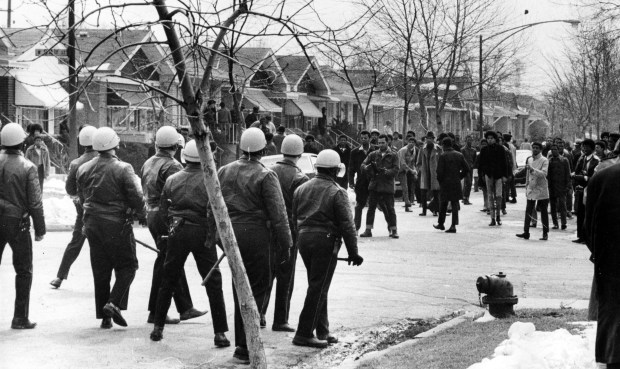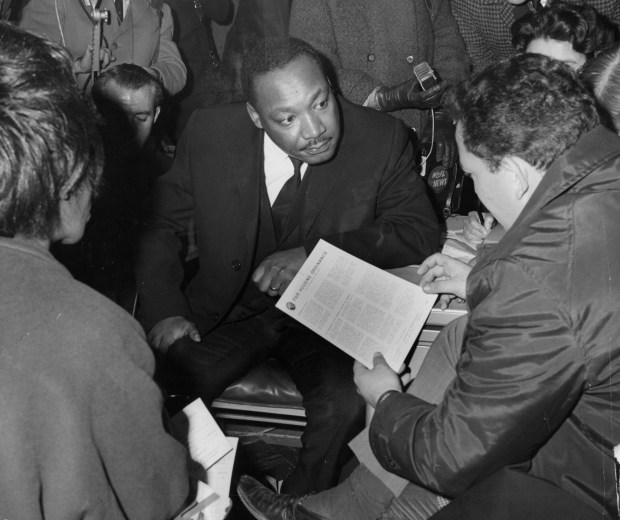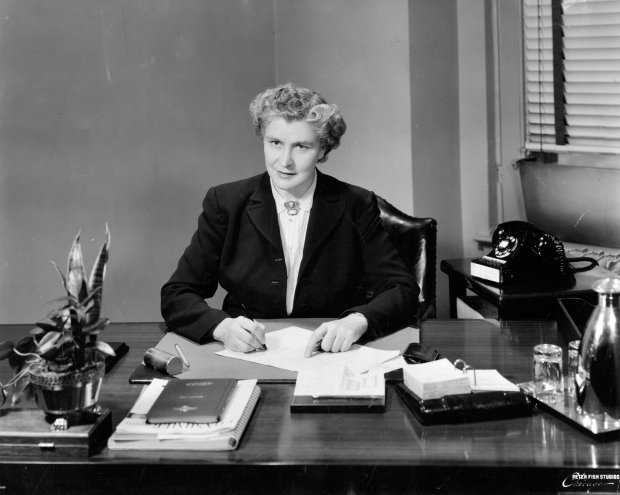Filmmaker and native Chicagoan Bruce Orenstein guesses that 98%, maybe even 99%, of city residents don’t know the full history of segregation in Chicago.
“Maybe they’ll know a little bit,” he said. “But universally, I think it’s eye-opening to most people … the roots of race and the scaffolding of segregation that got built decade after decade.”
In 2021, Orenstein gave us a glimpse of his four-part documentary series, “Shame of Chicago, Shame of the Nation,” with the first episode, “The Color Tax: The Origins of the Modern-Day Racial Wealth Gap.”
The piece centers on homes that were sold to Black families through installment contracts — for much more than white buyers would pay — and how and why contract-sellers were allowed to do it, plus what happened when Black families organized to fight back through the Contract Buyers League.
Now, the full project is complete and airing on WTTW-Ch. 11 on Thursdays through May 9. And if the “shame,” in the first episode raises your blood pressure, Orenstein — creator, writer, director and producer of the work — is hoping the rest of the series kick-starts a call to action from everyone.
“It’s a series about the history of housing segregation … 120 years of racial segregation … it raises issues of reparations, how to repair and heal,” Orenstein said. “There’s no easy answers as to how to solve the issue.”
The series includes people such as Elizabeth Wood, who ran the Chicago Housing Authority from 1937 to 1954 and waged a major battle in the late 1940s and early 1950s to build quality public housing that was racially integrated.
“Public housing was meant to be a real foundation for growing middle class or working class,” Orenstein said. “And after Elizabeth Wood was fired for trying to integrate, the city and the Chicago Housing Authority abandoned any notion of integration through all kinds of federal policies and everything else.”
Jesse Binga was a man who saved money and eventually started to buy what would become a real estate empire and founded the Binga Bank in 1908, the first Black-owned bank in Chicago. Binga had his home firebombed several times.
And then there was Arthur Falls, a Northwestern University trained physician and activist who helped desegregate Deerfield and a number of Chicagoland hospitals.
Other names in the series are those of architects who linked racism to real estate —names such as Frederick Babcock, Richard Ely and Nathan William MacChesney, real estate appraisers, economists and attorneys who codified racial discrimination into local and federal policy.
Chris Jenkins, a former Washington Post reporter and editor, is a producer for “Shame of Chicago, Shame of The Nation” who co-wrote the second episode. He said he was drawn into the project through the humanity of those in the Black community.
Jenkins’ work on the documentary speaks to the shift in the real estate industry after the 1919 Race Riot in Chicago.
“We’re trying to name names of the people who did this,” Jenkins said. “It wasn’t just nameless, faceless people — these people were intentional. These are the same people who need to have their names named in the same way that (Birmingham, Alabama, commissioner of public safety) Bull Connor is known to everybody in this country because of the hoses and the dogs and so forth.”

While doing research, Jenkins said he was taken aback by the coordination and strategy it took to connect race and real estate.
“As a Black filmmaker, I want to keep letting white America know about the social construction of their wealth, but I also want to remind Black people what we went through and what we did to fight,” Jenkins said. “It’s for political white America, the historical record and to deepen our understanding of the social engineering in the mid part of the 20th century to create wealth for white people and continuing that conversation, to continue to give us language.”
Adrienne Brown, associate professor at the University of Chicago and co-editor of “Race and Real Estate,” an interdisciplinary collection rethinking the narratives of property and citizenship, applauds Orenstein and Jenkins on “Shame of Chicago, Shame of The Nation.”
“There’s a reason that it’s been difficult for this story to be told because it wasn’t designed to have spectacular moments that we could capture on camera,” Brown said. “It was a story that was engineered to happen behind the scenes, in back rooms, in contracts where the fine print is very small. So much of the story is about the things that don’t look spectacular on the outside, that have such deep consequences in the way we live and the way we live now.
“This documentary really shows that Chicago is not just a place where segregation happened, but in some ways the intellectual and bureaucratic headquarters for thinking about how to carry it out,” Brown said. “It was a real brain trust in Chicago starting at the very turn of the 20th century, thinking about the problems that Blacks posed for real estate values and coming up with different ways of thinking about that as salesmen from the realtor point of view, as an intellectual problem being studied at UChicago, and the way the different neighborhood associations were also trying out different ways of keeping Blacks out of their neighborhoods.”

Orenstein said the plan for the documentary was to create an accessible, go-to educational tool. He said when people know the history, they are better informed as to how to address the challenges that the history created.
“When you think about it, where does Chicago have concentrated white poverty? It doesn’t, and over a 100-year period that has a tremendous impact on a population’s opportunity to generate wealth and be able to thrive and live in healthy communities and live healthy lives,” Orenstein said.
Orenstein, who worked as a community organizer for 15 years, said he hopes the documentary makes a difference. Viewer guides and accompanying materials will be accessible to the public. He envisions a robust campaign to promote the series after its run on WTTW, with community talks.
The Chicago Association of Realtors held a screening April 11 at the DuSable Museum. Orenstein is hopeful real estate agents and bankers will incorporate the lessons of the series into their industry orientations.
“This is the first step, facing up to the past,” Orenstein said. “If you look at what shapes Chicago, its whole history, it’s one of the most important influences on the city. You have the lake, that shaped Chicago. You have skyscrapers. You have its politics.
“Race has shaped Chicago and has had more of an influence on Chicago than virtually any other single factor,” he said. “To be literate about how that happened is what we hope this project will offer and hopefully, in years to come, it’ll inform this generation and future ones.”
The “Shame of Chicago, Shame of The Nation” series premieres at 9 p.m. Thursday on WTTW.




